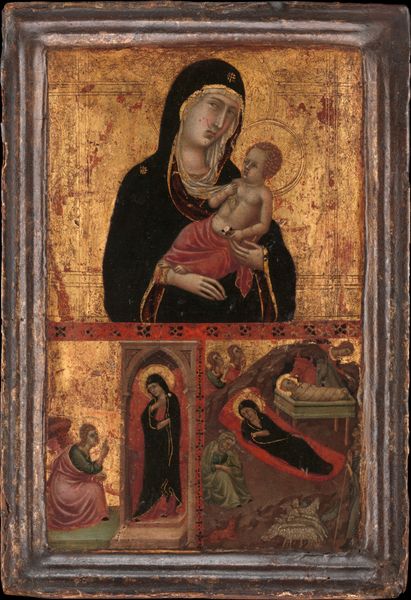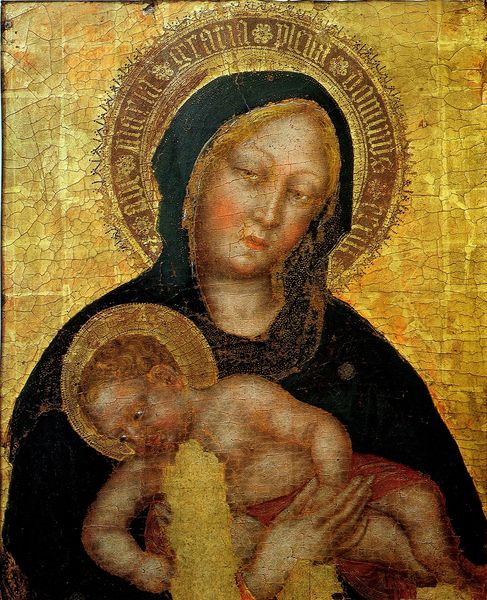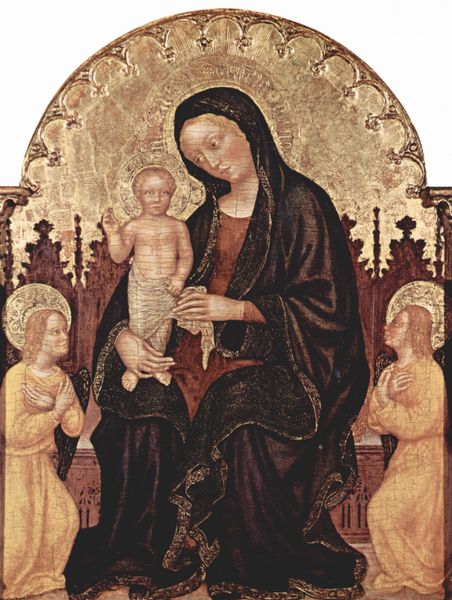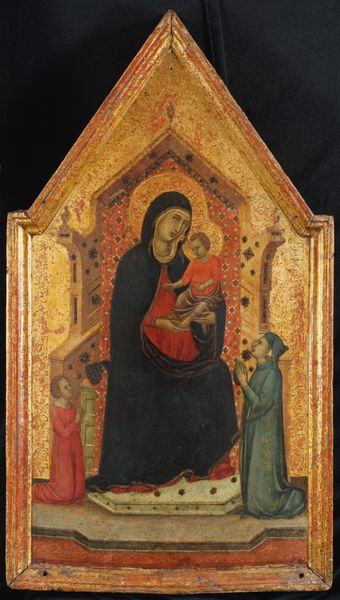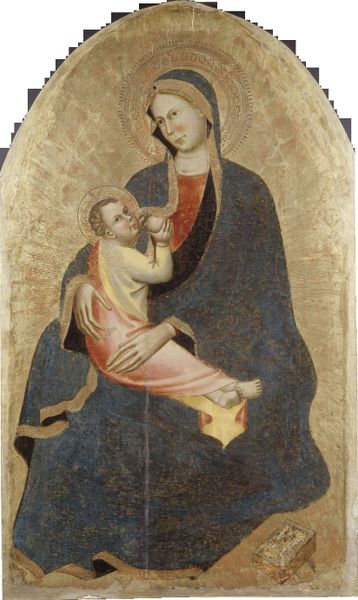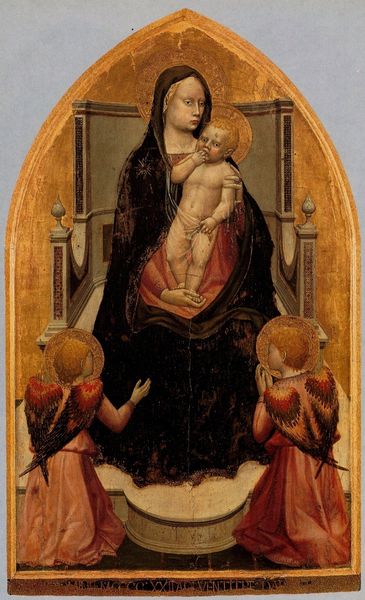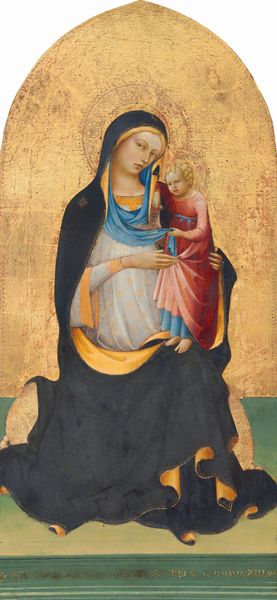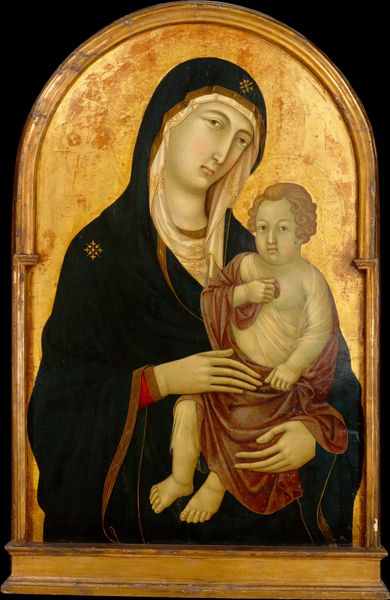
Madonna in Gloria between Saint Francis and Santa Chiara Gentile da Fabriano
0:00
0:00
tempera, painting, oil-paint
#
portrait
#
medieval
#
tempera
#
painting
#
oil-paint
#
oil painting
#
christianity
#
history-painting
#
italian-renaissance
#
early-renaissance
#
portrait art
#
virgin-mary
#
christ
Dimensions: 56.5 x 42 cm
Copyright: Public domain
Curator: Madonna in Gloria between Saint Francis and Santa Chiara, an oil and tempera on panel work. It is a fascinating piece to consider in light of gender and historical positionality. Editor: It certainly has a powerful initial impact, the sheer density of that gold leaf creates a startling luminescence, almost aggressively so, considering the somber figures. Curator: Right. Notice how the Madonna, positioned centrally, acts as a fulcrum, both visually and ideologically, in relation to Saint Francis and Santa Chiara. We can ask what her symbolic function means across their differing genders and positions within the religious structure. Editor: Absolutely. The stark materiality of the black robes juxtaposed with the radiant gold, one wrought by human hands, the other almost appearing divinely applied, highlights a conscious use of materials to establish a visual and spiritual hierarchy. What kind of pigments were used? Curator: These colour choices weren’t accidental, certainly. The sobriety of these figures echoes the social and religious constraints placed upon them. It’s an acknowledgement, and possibly even a critique, of institutional frameworks that prescribe specific roles based on gender and religious dedication. Editor: Precisely. This feels deeply connected to craft. Consider the artisans involved, their repetitive, almost meditative labour in applying that gold leaf. It raises interesting questions about artistic labour, both paid and devotional, in the construction of religious art. What was the process for such a labour-intensive painting? Curator: That labor also speaks to women’s roles within the social context. Chiara’s position, for example, signifies devotion, and obedience within the order she established, it reveals as much about feminine agency as about the control exerted over women’s spirituality in that historical moment. The question becomes whether this picture reifies those confines, or subverts them in some manner. Editor: Fascinating. Thank you for prompting these connections. Looking closer, the human labor and intention behind this iconic imagery comes to light. Curator: Likewise, looking more closely at the means of its construction reveals much about its place in shaping historical context.
Comments
No comments
Be the first to comment and join the conversation on the ultimate creative platform.

